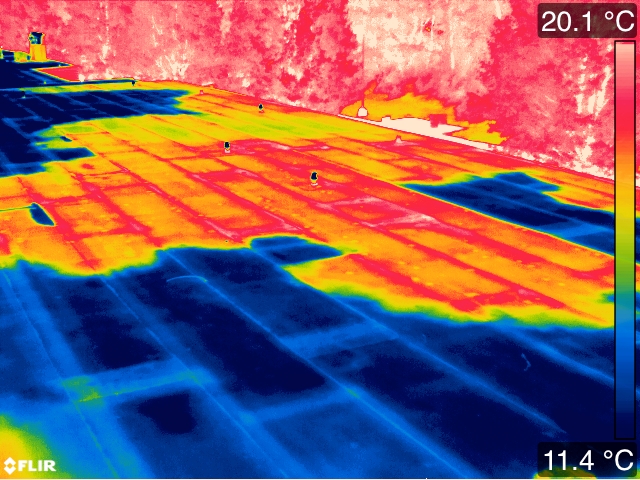
Alpine Thermal Imaging Systems who are in Dallas and Oklahoma perform Radiometric Thermal Imaging. A radiometric thermal camera measures the temperature of a surface by interpreting the intensity of an infrared signal reaching the camera. This non-contact and non-destructive technique (NDT) give users enormous advantages for many of their surface temperature measurement applications because it can be integrated onto unmanned aerial systems (UAS). A UAS allows an operator to move and position the thermal camera to quickly make temperature measurements over large areas and in difficult or dangerous environments. For example, a UAS can measure the surface temperature of a heat exchanger on a roof, a faulty connection on a high voltage transmission line, solar cells in a solar panel, and over large agricultural fields. However, the ability to remotely sense temperature, as opposed to direct surface contact, comes at the necessity to account for surface and environmental conditions.
It is important to distinguish radiometric temperature measurements as surface infrared measurements because radiometric measurements should be restricted to optically opaque materials. Metals and organic material are usually completely opaque and radiometric measurements should be able to resolve their surface temperature. Although there are materials that are semi-translucent to infrared heat (sapphire glass, zinc sulfide glass, zirconia oxides), radiometric measurements of these surfaces must account for the total volumetric and through-plane temperature of the material; this significantly increases the complexity of the analysis.
Remote temperature sensing of a surface relies on the ability to accurately compensate for surface characteristics, atmospheric interference, and the imaging system. The surface characteristics that influence the temperature measurement are surface emissivity and reflectivity at the infrared spectral wavelengths. The atmosphere will absorb and emit thermal energy based on its composition and the distance between the camera and the surface. Finally, the ability to spatially resolve detailed temperature measurements in a thermal image is influenced by image focus, blur, and pixel resolution. The influence of each of these factors on measurement accuracy is highly dependent on the specific measurement application and each must be accounted for and resolved.
